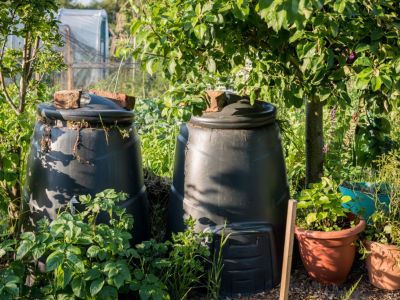Compost not heating up to proper temperatures will result in a smelly mess or a pile that takes forever to break down. How to heat up compost is a common problem and easily addressed.
Tips for How to Heat up Compost
The answer to how to heat up compost is simple: nitrogen, moisture, bacteria, and bulk.
Nitrogen is necessary for cell growth in organisms that aid in decomposition. A by-product of this cycle is heat. When heating up compost piles is a problem, the lack of ‘green’ material is the most likely culprit. Make sure your brown to green ratio is about 4 to 1. That’s four parts dried brown material, like leaves and shredded paper, to one part green, such as grass clippings and vegetable scraps. Moisture is necessary to activate compost. A compost pile that is too dry will fail to decompose. Since there is no bacterial activity, there will be no heat. Make sure your pile has adequate moisture. The simplest way to check this is to reach your hand into the pile and squeeze. It should feel like a slightly damp sponge. Your compost pile may also simply lack the right bacteria needed to start the compost pile decomposing and heating up. Throw a shovelful of dirt into your compost pile and mix the dirt in some. The bacteria found in the dirt will multiply and start helping the material in the compost pile break down and, thus, heat up the compost pile. Lastly, the problem of compost not heating up may simply be due to your compost pile being too small. The ideal pile should be 4 to 6 feet (1-2 m.) high. Use a pitchfork to turn your pile once or twice during the season to make sure enough air reaches the center of the pile.
If you’re building a compost pile for the first time, follow the directions carefully until you get a feel for the process and heating up compost piles shouldn’t be a problem.
